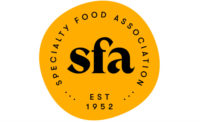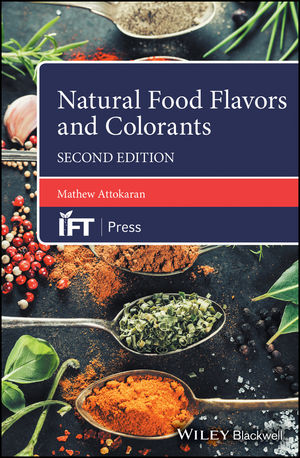The Specialty Food Association (SFA) has revealed five trends that it says will drive the growth of the $170.4 billion specialty food industry in 2022.
The SFA’s Trendspotter Panel virtually assembled at three digital SFA shows to research thousands of specialty food and beverage products from around the world. After recording their findings, Denise Purcell, v.p., content and education, SFA, pored over the data and deciphered the trends.
"As we head into a second year of the COVID-19 pandemic, comfort is an overriding theme," Purcell said. "The events of the past 18 months have consumers seeking out familiar and comforting foods and beverages, but often with a twist for some excitement, or with specific diets and health concerns in mind."
2022 Specialty Food Association Trendspotter Panel Trend Predictions
1. Pasta's comeback. Slowed in recent years by keto and low-carb diets, the COVID-influenced comfort food surge has revived the pasta category. We're seeing shapes that are less familiar to the U.S. market, or brand new, like cascatelli, a collaboration between Sfoglini and Dan Pashman of The Sporkful podcast, along with a resurgence of gluten-free and alternative-grain options. Black rice, pumpkin, red lentils, and purple carrots are bringing "new spins on traditional pasta in Instagram-friendly ways," said Trendspotter Jonathan Deutsch.
2. Plant-based comfort food. More plant-based options of nostalgic favorites are coming to market, making comfort food more accessible to those who follow alternative diets. Plant-based patties, pea-protein based crumbles to use in tacos, and tenders and nuggets made with Chilean seaweed were among the latest innovations seen at SFA digital events like Fancy Food 24/7.
3. Wide world of snacking. For the past 18 months, global flavors have been offering consumers culinary adventure in lieu of traveling. Their growing prominence has inspired innovation in snacks and treats categories. Fancy Food 24/7 revealed snack bars that deliver Thai flavors while being keto-friendly and high in prebiotic fiber; potato chips from Spain in foie gras flavor; and peanuts flavored with turmeric and chili, "like the spicy peanut snack from hawkers on street corners in Bangkok that I relished as a child," noted Trendspotter Kantha Shelke.
On the sweet side, exhibitors offered ice cream flavors that pay homage to Latin American coffee and dessert combos; a twist on classic panettone featuring traditional Sicilian pistachios in the bread and as a filling; and from the Philippines, a white chocolate moringa-infused bar topped with pinipig, a traditional ingredient of pounded and toasted young glutinous rice.
4. Peppers are hot. Consumers are gaining an education on the right peppers for recipes, snacking, and condiments, thanks to a preponderance of regional chili peppers, chili crisps, dried peppers, and pepper flakes hitting the market. In addition, flavor innovations like a cooking oil that paired coffee with spicy chiles were on display at Fancy Food 24/7. "Ajvar is a lesser-known red pepper and eggplant condiment that's made in Turkey and is vegan," says Trendspotter Jenn de la Vega. "Dua Lipa mentions ajvar on Hot Ones and recommends it with Albanian cooking."
5. Foods with benefits. Consumers are taking immune system health seriously in the wake of the pandemic, but the antioxidants and anti-inflammatory properties of some functional foods and beverages are increasingly appealing for their reported anti-aging benefits, too. Fancy Food 24/7 revealed functional gummies; oils marketed as cosmetic oils to drink or use topically for the complexion; drinks that paired mango with collagen for protein and potential beauty benefits, and turmeric for anti-inflammation; and a butterfly pea flower extract, high in anthocyanins, which are linked to anti-aging for the skin.
Continuing Trends
Waste not. The rise in consumers' interest in supporting sustainable brands remains steady, especially among younger Gen Z shoppers, according to the SFA's Today's Specialty Food Consumer research, 2021-2022 Edition. Innovations in products made with upcycled ingredients that would otherwise go to waste, are especially prevalent. Among other examples, makers have created RTD beverages made with avocado seeds, an upcycled vegetable broth concentrate, and a cacao tea that uses leftover product from the chocolate-making process in a sustainable tea.
Fully stocked bar. Cocktail culture continues, and nonalcoholic spirits, wine, and mixers are helping non-drinkers imbibe without compromise. "The low- and no-alcohol trend is booming and one new area within it is dealcoholized wine," said Trendspotter Kara Nielsen. Other on-trend products include cocktail-flavor infusions in ice cubes, a pickle juice chaser, a cocktail mix that is also a recovery shot for runners, botanical beverages designed to offer an alternative to gin and tonics, maple syrup bitters, and syrups flavored with turmeric and ginger.
Twists on chocolate classics. Consumers crave variations on the familiar that provide joy and comfort. Chocolate makers rose to the occasion with whimsical confections in animal shapes like hippos, dark-chocolate honeycomb candies, and decaf chocolate-coffee combos.
Other Notable Products
- Cookies made with whey protein for a "better-for-you" treat
- Hot sprouted almonds
- Scandinavian-style rice porridge (Risengrød or Risgrynsgröt), served warm with milk, sugar, and cinnamon
- Simmer sauces for consumers following the FODMAP diet, which avoids sugars that the small intestine absorbs poorly
- Upgraded sour creams in new flavors to use as dips or as the base for flavorful sauces










